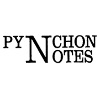Abstract
In his introduction to American Postmodernity, Ian D. Copestake succinctly delineates the principal strategies and contents of the collection: "Of the nine essays which follow five look closely at Mason & Dixon, and these first cut their teeth as papers presented at King's College, London between 10 and 13 June 1998. … The remaining four offer connecting perspectives with Pynchon's previous work through contexts which aid our understanding of his fiction in relation to evolving notions of American postmodernism." Copestake himself writes compellingly of Pynchon's status as a postmodern writer recluse: "The work itself, reflecting Pynchon's reclusive detachment from any conventional identification of himself with authorship and fame, is free from any obligations laid down by such definitions" (10). This is precisely the strategy Pynchon enacts in his own biographical choices and their relation to the literary apparatuses of the lecture circuit, the interview, the literary banquet and so on. Some may read this desire for anonymity as humility, and others may read it as something even gruesome. But for Pynchon it is, at least ostensibly, a conscious decision to avoid those apparatuses of subjectivation that would entrap one in some dominant position in relation to the various institutional powers with which literature all too easily ends up conniving.
How to Cite:
S. Roraback, E., (2002) “New Pathways Through Pynchon”, Pynchon Notes , 174-182. doi: https://doi.org/10.16995/pn.82
Downloads:
Download PDF

